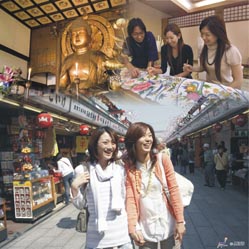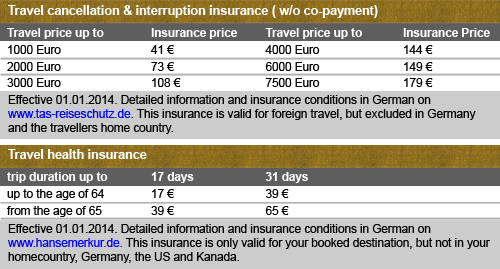Japan Live
Program
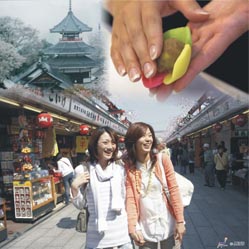
1st day: Departure from London or other UK/Irish airport
You depart in the early afternoon from your local airport with destination Tokyo. From London you take a direct flight to Tokyo, from other British/European cities you take the connecting flight to Frankfurt or Paris from where the flight will be in the Airbus A 380, currently the world’s biggest passenger plane. You will arrive in Tokyo in the morning of the following day.
2nd day: Welcome to the land of the rising sun
You arrive in Tokyo in the morning and head to Yokohama, the biggest harbour town in Tokyo Metropolitan area. The day starts smoothly with a visit to a paradisiacal landscaped garden. Sankeien Garden is a masterpiece of Japanese horticulture. The small bridges, streams and ponds make up the quiet and peaceful atmosphere in this garden.
Land of contrasts
A sightseeing walk during which you pass the traditional Chinatown and the modern quarters, leads you on the one hand to the skyscrapers of the financial district and on the other hand to the small shopping streets with its buzz of activity that will surely electrify you. For finishing the day you have the opportunity to contemplate this impressive city and Japan‘s biggest commercial port during a boat ride in the Tokyo Bay.
3rd day: Kyoto’s holy locations
You get to Kyoto by Shinkansen, Japan’s high-speed express train.
The first destination in Japan’s former capital is Nijo Castle. This fortress from the 17th century was built by the Shoguns of the Tokugawa family. The gloriously painted walls and sliding doors will certainly fascinate you, as well as the gardens within the fortress. The builders even thought of the security of the castle. Intruders did not go unnoticed because of the nightingale floors – Japan’s oldest security system.
Architects & Thunder gods
The first thing you notice at the Chionin Temple is the stately wooden gate, the biggest of its kind in Japan. But a tragic fate is linked to the construction: The architect committed suicide on account of the increased costs.
In the proximity of the Chionin Temple is situated Maruyama Park. It is a beautiful enclosure in the style of a Japanese landscaped garden that invites to a relaxed walk.
The next stop of your Kyoto visit is the holy Yasaka Shrine. It is dedicated to the Shinto storm deity. It is for you the possibility to dip in Japan’s mythical past, a time when the Shinto gods walked the face of the earth.
Japanese carpentry
Kiyomizudera Temple – “the temple of clear water“ was founded a long time ago by the monk Enchin who looked for the Yodo river’s spring. Its wooden terrace that juts majestically out of the hill where the temple lays is a masterpiece of carpentry. If you strive to good health do it like the Japanese visitors and taste the water of the temple’s holy spring.
Today’s last stage leads you to the Gion quarter. It is known for its traditional streets and buildings but also for the Geishas who are very photo-shy. Maybe you spot one and you are able to take a photo.
4th day: Okayama and Takamatsu
The first excursion of your Japan trip takes you to Okayama by Shinkansen. Okayama is a small town between Kyoto and Hiroshima that is famous for one of Japan’s most beautiful gardens. The picturesque Korakuen garden lies on the waterfront, right across from the black „Crow Castle”.
The second destination of this day is the small town Takamatsu on Shikoku, the smallest of the four Japanese main islands. Here as well a landscape garden is the main attraction. It is the well-known Ritsurin garden with its lakes and the tea house in front of forested hills that build the setting for this truly beautiful scenic garden.
5th day: Hiroshima
The war period during the WWII represents one of the darkest chapters in Japanese history and Hiroshima in particular had to suffer strongly from it. The once prospering city resembled a giant wreckage after the drop of the first atomic bomb in history on Aug. 6th in 1945. There was built the Peace Park, the Peace Memorial and the Peace museum in memory of the victims.
Paradise beyond the ruins
To show you another side of the region we want to take you on a boat ride to a small scenic island offshore that is a World Cultural Heritage Site. The island Miyajima is holy in the Shinto belief. The red Torii of the Itsukushima Shrine that reflects in the water is a popular photo motif. This landscape consisting of the mountains, the sea and the “floating Torii” is considered by Japanese as one of three most beautiful scenes of Japan.
6th day: Imperial City Kyoto
After having visited the Shoguns castle and the holy places in the east of Kyoto, it is now time to get to know the western part of the city.
The Imperial palace of Kyoto is located within a marvellous parkway where you can promenade and make a couple of photos.
Finally we will go inside the Palace area with its modest wooden buildings and parkways that tempt the visitor to get carried back to the times of Samurais and Geishas.
Dreams made out of silk
Japan has a longstanding technical tradition. A special site for Japanese craftsmanship is the textile centre Nishijin. It is one of the main spots for silk production and processing since several centuries. You can enjoy the sensual creations during a Kimono fashion show and have subsequently the chance to watch the work on the old sewing machines.
Civil wars and old Shoguns
Ninnaji Temple – once built as an imperial residence – was destroyed several times by fires or during the civil war so there were only ruins remaining. Finally the precincts became part of monastery of the Shingon School. Especially during the period of the cherry blossom this temple attracts visitors from all over the world.
The tour progresses with a visit to Kinkakuji, the temple of the Golden Pavilion. It was initially built as a retirement residence for the Shogun Ashikaga Yoshimitsu but after his death it was decided to transform it into a Zen temple. Nowadays it hosts, besides the superb Golden Pavilion, a beautiful garden that is very convenient for a relaxed walk.
7th day: Kanazawa on the West coast
On the journey’s third getaway we want to take you to Kanazawa near the Japanese west coast. Kenrokuen in Kanazawa counts among the three famous Japanese gardens. The day begins with a promenade because we think there should always be enough time for rest and taking photos during the holidays. What would be more suitable than the paradisiacal gardens of Kenrokuen?
Modern aesthetic & Samurais
Not far from it awaits the next highlight in Kanazawa. Dip into the contemporary Japanese art by visiting the 21st century Museum of Modern Art. The exhibition pieces stand out due to their aesthetic combination of natural and artificial elements.
The last stage of this day is a very interesting one. You visit Nagamachi, a district where there are former Samurai residences. This quarter lies at the bottom of Kanazawa‘s former castle compound whose tower was unfortunately completely destroyed in a fire 1881.
8th day: Scenic Arashiyama
On the 8th day of your Japan Live travel you go on an excursion to the hills on the west side of Kyoto. The territory of Arashiyama was a few centuries ago already a place to escape from the urban life for members of the imperial court or members of the Samurai clans.
They had to go past smaller shrines and temples and pass the idyllic bamboo grove to arrive in Arashiyama.
The Tenryuji Temple, one of the most beautiful temples in Kyoto with integrated garden is located right here, surrounded by the mountain chain. It was built by Shogun Ashikaga Takauji out of regret, because he first defended the authority of the then Emperor just to take over the governmental power later on. After the Emperor’s death Takauji had a dream that induced him to build a temple to apologize to the departed Emperor.
The old town & smart monkeys
After a short stroll through the old town we will attend the Iwatayama mountain chain from where we will have a splendid panoramic view onto the whole city of Kyoto that is surrounded by mountains. On the top of the mountain you will have unexpected company, because you will encounter the very rare Japanese macaques, a monkey species able to survive the harsh winter, that is famous in other Japanese regions for bathing in hot springs and washing potatoes with salty seawater. You return a little earlier to Kyoto today so you have some time to explore the city further on your own.
9th day: Himeji or Nara
Today another ride with the Shinkansen train awaits you and you get closer to Tokyo. On the way to it we want to show you further tracks in the Japanese history.
Red light for the „White Heron“
The castle of the “White Heron” and Kokoen garden await you in Himeji. Himejijo was considered as impregnable until the 16th century but then it was conquered by the Japanese general Toyotomi Hideyoshi, the second unifier of the empire in the Japanese history.
Since the Himeji castle will be renovated completely from 2010 until 2014, there is only very limited access to it and the castle’s main tower will not be visible at all.
Aristocrats & tame deer
Alternatively we are going to visit, one of Japan’s former capitals. Until Heian-kyo, called Kyoto nowadays, was proclaimed capital in 794, Heijo-kyo, today‘s Nara, was the residence of the Japanese Emperor and thereby the Japanese capital. Many heirlooms arisen from this period are preserved in Nara today.
After the resident tame deer welcomed us we will have a look at Kofukuji Temple. It was the domestic temple of the ancient noble family Fujiwara that often ruled in the Japanese history instead of under-age Emperors. The family was finally exterminated by Japan‘s first Shogun Minamoto no Yoritomo.
Buddhas & stormy daughters
Today’s next station is the temple Todaiji. It holds two records at the same time: the biggest wooden hall and the biggest bronze Buddha.
The route continues on scenic paths that are fringed with stone lanterns as far as the Kasuga-Taisha Shrine. The shrine is dedicated to the three daughters of the Shinto storm deity but there are other houses as well where more Shinto gods reside.
In the evening we finally arrive in Tokyo.
10th day: Tokyo – the metropolis
The first day of your stay in Tokyo starts with some free time in the morning where you can get a sense for the city.
In the afternoon we will go for a walk through one of the traditional quarters of Tokyo. The Asakusa neighbourhood was during the Edo period (1600 - 1868) the nightlife district where a traditional theatre took root but also a red-light district. Nowadays there are streets and alleys with small stores that offer handicraft products and local delicacies.
Everything you like
Particularly striking is Kaminarimon, the so-called Thundergate with its gigantic red lantern. Immediately after passing it you find yourself on Nakamise, a traditional shopping street with small stores. Have a taste of some of the Japanese delectations or lookout for postcards and souvenirs.
River goddess
Nakamise leads directly to the Asakusa-Kannon Temple. Two fishermen pulled a small statue of Kannon, the goddess of compassion out of the nearby Sumida River. As a result the village president assigned to build the Asakusa-Kannon Temple at this very spot. Right next to the temple is located the Asakusa Shrine that is dedicated to the two fishermen, the village president that made the construction contract and the goddess Kannon.
11th day: Tokyo‘s east side
In the morning you head to Ueno. Ueno is not exactly a very traditional neighbourhood but it has its own charm to it. Depending on the weather we will either visit Ueno Park with all its little attractions or the Tokyo National Museum where there is a lot to discover about the Japanese culture.
On artificial islands
In the afternoon we want to show you two particular places near Tokyo Bay. First we head to Odaiba, an artificially elevated island where there is still remains of artillery to be found that was erected there in the 19th century for protection purposes. From Odaiba you look directly onto one of the city’s landmarks – the Rainbow Bridge – and you have a breathtaking panoramic view onto Tokyo’s skyline.
Glistering shopping mile
Now it is time for shopping! We will head to Ginza, the most exclusive shopping mile in Tokyo. The whole quarter was a centre for silver coin minting (Gin: Silver in Japanese) during the Edo period. The world‘s most famous brands can be found here and it is worth it to lookout for postcards since the town’s best paper shops are on Ginza as well.
Enjoy the blaze of light of the neon signs when it is getting dark in the evening, it is a sight that you certainly won’t forget.
12th day: The exuberant metropolis
The 12th day of your Japan trip starts bright and early, because only the early birds are going to be given access to the world’s biggest fish market. Tsukiji fish market is the biggest transshipment point for fish and seafood of all kinds. If you like Sushi you are in the right place and you will have the opportunity to take a special breakfast in the vicinity of Tsukiji.
After we have then picked up the late sleepers from the hotel we head to western Tokyo.
Stepping into the modern age
We stroll along the shopping alleys of Harajuku and the popular stores for Japanese youth culture to get to Yoyogi-Park and the nearby Meiji Shrine. It is an excellent example of Shinto shrine architecture. The shrine is dedicated to the Emperor’s couple Meiji that is mainly responsible for Japan’s modernization in the 19th century and therefore for the modern Japanese state.
Next stop on today’s tour is Shibuya, one of the modern nightlife districts in Tokyo. You will see the statue of the loyal dog Hachiko that waited every day for his owner at the train station, even after the owner’s death. Furthermore you can marvel at one of the world’s busiest crossroads where up to 10000 people cross the road at the same time on every green light.
The sea of houses
Last but not least is our final destination of the day. From the observation deck of Shinjuku’s town hall on the 45th floor you have the opportunity to enjoy the breathtaking view onto the whole city. On clear days you may even be able to look as far as the Fuji-san.
13th day: Kamakura & Hakone
It is time again for an all-day excursion. To begin with you drive in a comfortable coach to Kamakura, the former place of residence of the one-time Shogunate. Numerous shrines and temples testify to these former times as well as the world’s biggest bronze Buddha that is standing here in front of a beautiful natural scenery of forested mountain chains.
The next stop in Kamakura is the well-known Hasedera Temple. Highlights here are the splendid paradisiacal gardens and the cave where the tutelary goddess of music Benten is worshipped.
Fire hills & crater lakes
We drive on to the volcanic area of Hakone where we are going to visit the sulphur springs on Mt. Owakudani. After a relaxing boat ride on Lake Ashi, the crater lake of the inactive volcano, we return to Tokyo.
14th day: Nikko, Japan’s sunray
The last excursion on your Japan trip leads you to the town of Nikko that could be translated as “sunray”.
1200 years ago the monk Shodo Shonin founded the first Buddhist temple. More and more temples and shrines gathered around the surroundings and formed the Japanese religious centre for Shinto and Buddhism at the same time.
Rinnoji Temple is one of the best known in Nikko because it was the first one to be built on top of Mt. Nantai. It has a turbulent history including destruction, rebuilding of the whole temple and different prohibition periods. Nowadays it belongs to the Buddhist Tendai School.
The Shogun’s wake
Toshogu Shrine has a different story. Shogun Tokugawa Ieyasu has made his ashes enshrine here after his death so he could protect Japan as a deity even after his death. The magnificent wood carvings and the famous picture of the three monkeys make it obvious that a great number of workers helped building this masterpiece – it was 455000 workers to be exact!
The last stop on today’s route is the Taiyuin Mausoleum that was built in honour of Tokugawa Iemitsu. The grandchild Tokugawa Ieyasu‘s was so reverent to his grandfather that he wanted to serve him even after death. That is why he made enshrine his own ashes in the Taiyuin Mausoleum.
15th day: Farewell to Japan
Today it is time to say goodbye to this country that we became so familiar with in the last two weeks.
But if you know Japan and the Japanese hospitality you will certainly come back soon.
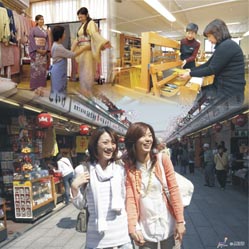
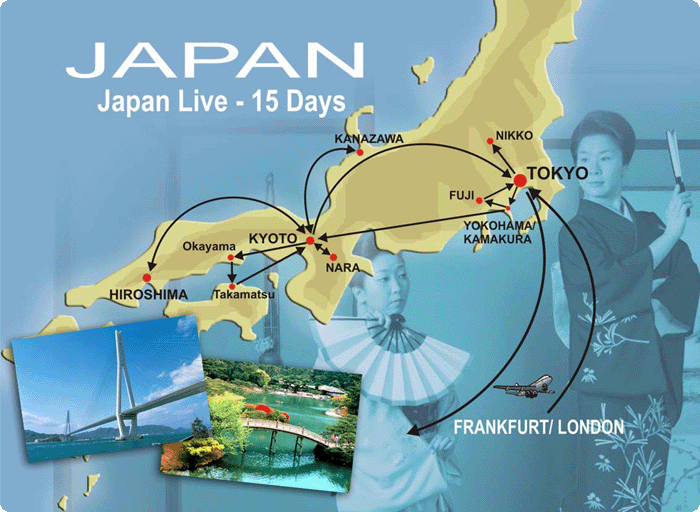
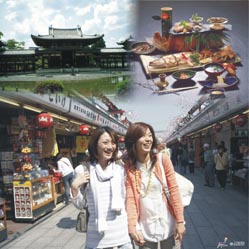 Features
Features
